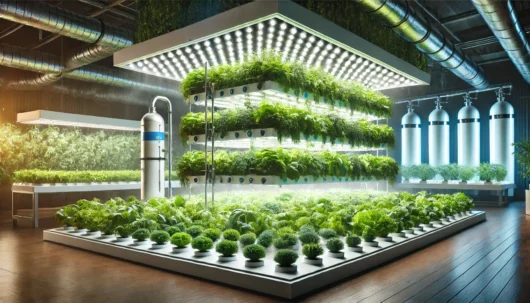In the world of modern convenience and industry, industrial gas cylinders are often unsung heroes. These robust containers, filled with various gases, play a pivotal role in our daily lives, powering everything from our stovetops to medical equipment. In this article, we will take an in-depth look at pressurised cylinders: their types, applications, safety considerations, and environmental impact.
Understanding Pressurised Gas Cylinders
An industrial gas cylinder is a high-pressure vessel designed to store and transport gases in a compressed state. These cylinders are typically made from materials like steel, aluminium, or composite materials to withstand the immense pressure exerted by the gases inside. They come in various shapes and sizes, with standardised designs to ensure safety and compatibility.
Types of Gas Cylinders
Gas cylinders can be categorised based on their content and application. Here are some common types:
- Industrial Gas Cylinders:
- Oxygen (O2): Used in a wide range of industrial processes, including welding, cutting, and as a feed gas for chemical production.
- Acetylene (C2H2): Valued for its high-temperature flame, acetylene is vital for metal cutting and welding.
- Nitrogen (N2): Used for inerting, blanketing, and as a pressurising gas in various industries.
- Hydrogen (H2): Widely utilised in the petrochemical industry, hydrogen is also used as a fuel source for vehicles.
- Argon (Ar): A shielding gas in welding and as an inert gas in various industrial processes.
- Medical Gas Cylinders:
- Medical Oxygen: Vital for providing supplemental oxygen therapy to patients in healthcare settings.
- Nitrous Oxide (N2O): Used as an anesthetic agent and analgesic in dental and medical procedures.
- Medical Air: A blend of oxygen and nitrogen used for respiratory therapy and medical procedures.
- Liquefied Petroleum Gas (LPG) Cylinders:
- Propane: A common fuel for heating, cooking, and powering appliances in homes and recreational vehicles.
- Butane: Used for heating and cooking in regions with milder climates.
Applications of Gas Cylinders
Gas cylinders have a broad range of applications across various industries and everyday life:
- Home and Commercial Use:
- Cooking: LPG cylinders are a popular choice for gas stoves, grills, and outdoor cooking.
- Heating: Many homes and businesses use propane for space heating and water heating.
- Refrigeration: Propane is used as a refrigerant in some refrigeration systems.
- Industrial Processes:
- Welding and Cutting: Industrial gases like oxygen, acetylene, and argon are essential for metalworking.
- Chemical Manufacturing: Gases like nitrogen and hydrogen are used in various chemical processes.
- Pharmaceuticals: Nitrous oxide is used in dental and medical procedures as an anesthetic agent.
- Healthcare:
- Medical Oxygen: Vital for patients with respiratory conditions and during surgical procedures.
- Nitrous Oxide: Used for pain relief in dental procedures and labor.
- Agriculture:
- Pest Control: Carbon dioxide cylinders are used to generate dry ice for pest control.
- Greenhouses: CO2 cylinders are used to enhance plant growth in controlled environments.
Safety Considerations
The safe handling, storage, and transport of gas cylinders are of utmost importance to prevent accidents and protect human health and the environment. Here are key safety considerations:
- Storage: Gas cylinders should be stored in a well-ventilated area, secured in an upright position to prevent falling. They should be kept away from heat sources and combustible materials.
- Transportation: Gas cylinders should be transported in specialised vehicles, secured to prevent rolling or tipping.
- Regulators and Valves: Proper regulators and valves should be used to control the flow of gas from the cylinder. Never tamper with or force a cylinder valve.
- Inspect and Test: Cylinders should be regularly inspected for damage, corrosion, or leaks. Pressure relief devices should be tested to ensure they function correctly.
- Protective Gear: Users handling gas cylinders should wear appropriate personal protective equipment (PPE), including safety glasses, gloves, and protective clothing.
- Training: Personnel should receive proper training in the handling and use of gas cylinders.
Environmental Impact
The use of gas cylinders has environmental implications, primarily related to the gases they contain:
- Greenhouse Gas Emissions: Some gases stored in cylinders, such as methane (CH4) and nitrous oxide (N2O), are potent greenhouse gases when released into the atmosphere. Efforts are made to minimise emissions during production, transportation, and use.
- Recycling and Disposal: Gas cylinders should be properly recycled or disposed of at authorised facilities to prevent environmental contamination.
- Energy Consumption: The production and transportation of gas cylinders consume energy and resources. Efforts to optimise these processes are ongoing to reduce their environmental footprint.
Gas cylinders are indispensable tools that have transformed the way we cook, heat our homes, manufacture products, and provide essential healthcare services. While they provide unparalleled convenience and versatility, the responsible use of gas cylinders is crucial to ensure safety and minimise their environmental impact. As technology advances, the industry continues to evolve, seeking innovative ways to enhance the efficiency and sustainability of gas cylinder use.


